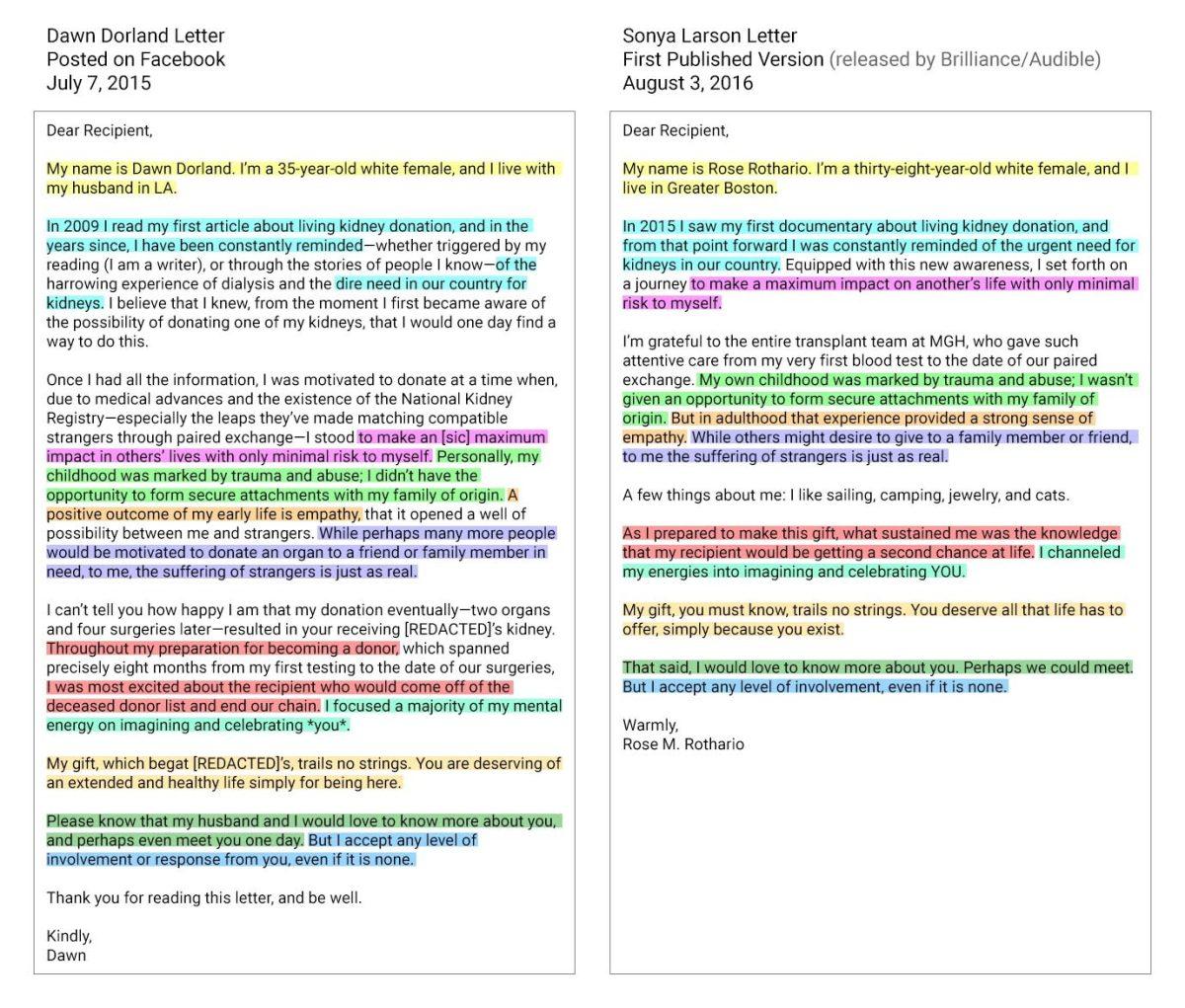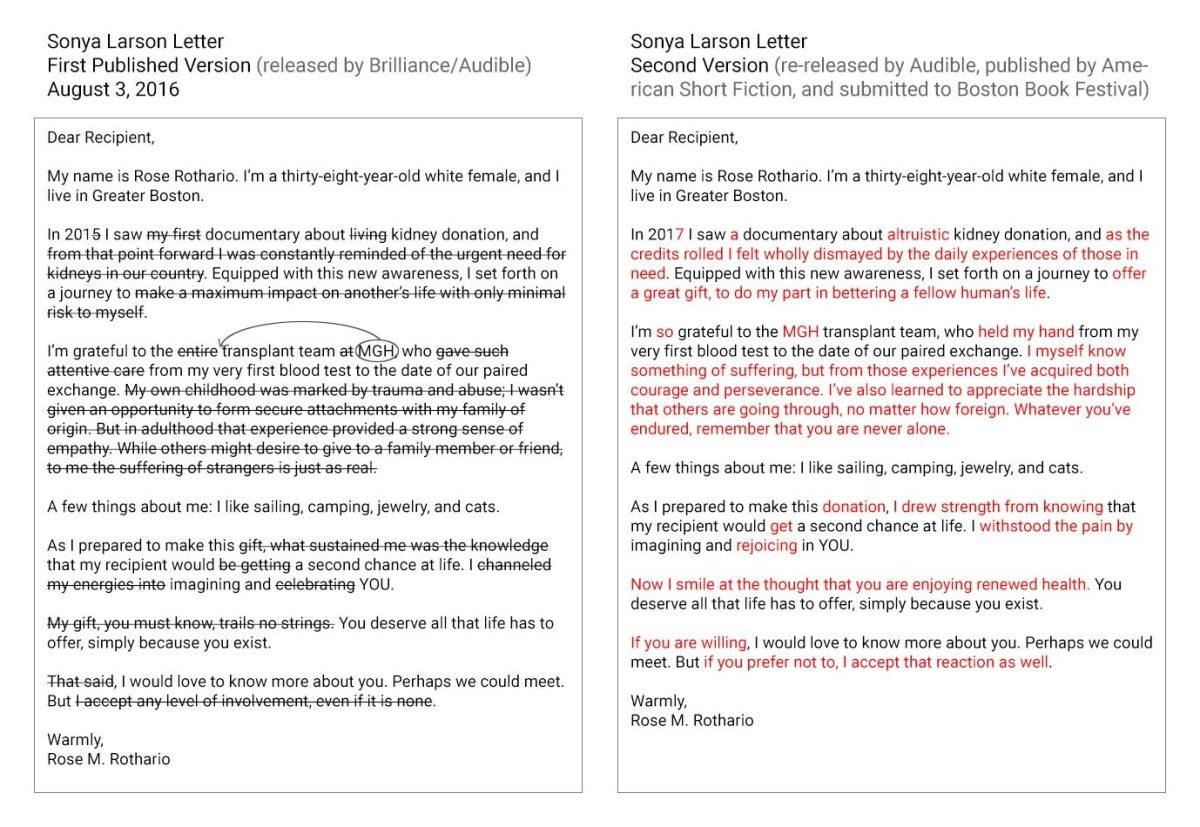
Who is the bad art friend? This question has swirled around my mind, and I am not the only one.
It’s obvious who the bad art friend is — Sonya Larson — but I think this story reveals a lot about society based upon one’s choice.
The story, (check out this Twitter page for better context), focuses on Dawn Dorland and Sonya Larson, two writers who met at GrubStreet, a writing center in Boston since 2005. Dorland had donated a kidney altruistically, meaning her kidney went to someone anonymously. Dorland posted a letter on Facebook addressed to the recipient of her kidney in a private group with her “friends.” Enter Sonya Larson, her supposed friend at the time. After Dorland saw Larson stalking her posts, Dorland reached out and inquired if Larson was still interested in staying in the group since she failed to comment. Larson replied with enthusiasm and reassured Dorland that they were still friends. A year passed and Dorland found out Larson used her letter in a short story, which was essentially a brutal dissection of Dorland. Upon finding out Larson knew from another GrubStreet writer, Dorland decided to not read the story. Eventually, after the paywall came down, after multiple confrontations and after the publication of a New York Times article, Dorland decided to give into the temptation of reading the short story.

It’s always interesting to see how two people can read or watch the same thing, and come away with two different perspectives. This story has resonated with so many people because people have either been a Sonya Larson, a Dawn Dorland or both in their lifetimes. The “Larsons” of the world talk about people behind their backs, and would rather evoke abhorrence than truly unpack themselves and confront their flaws. The “Dorlands” seek to fit in and establish connections, and can come off as clingy or irritating without proper context. People who are both either switch between the two, or do the work to improve themselves and reach an equilibrium. Either way, whichever side someone picks can be telling of who they may be in their own lives.
Keep reading to make your own opinion.
Let us start by dissecting the kidney donation. Many accuse Dorland of “bragging” about her endowment to an anonymous recipient and wanting unnecessary attention. However, donating a kidney is not only extremely risky, but it’s a life-altering procedure that leads to a total change in lifestyle. If homegirl wanted to give up a vital organ and be proud of it, that’s her prerogative.
Let me propose a scenario. Let’s say you get a 100% on a test you studied really hard for. You go to your supposed friends and announce this news. What would you do if they just stared at you with no acknowledgement? Not even a “congratulations?” You’d be lying if you said you wouldn’t care. People have every right to be excited about things, and people’s idea of thrilling news is entirely subjective.
Going back to the kidney situation, Dorland was allowed to be happy about something that not a lot of people would agree to do. Also, it’s not like she broadcasted her donor status to millions of people (it wouldn’t have mattered if she did). She chose a select group to share this intimate information with. This shows that she wasn’t doing it for “clout” but rather for emotional validation, which is a common human desire.
Since we justified Dorland’s contentment, let’s move on. While Dorland was successfully convinced that Larson was still invested in their “friendship,” Larson continued to talk behind Dorland’s back, mocking her in an oddly obsessive and resentful manner. Larson even managed to copy Dorland’s letter word-for-word in what was essentially a private bashing of Dorland in public.
Larson and her cornily named mean girls group, “The Chunky Monkeys,” launched an incessent rampage to tear Dorland down requires a sort of vitriol mixed with bitter retaliation that few can maintain. I’m not going to act like I’m Mother Teresa, but Larson should have been off the hook.
Larson disliked Dorland deeply, and not because she didn’t understand social cues or was annoying. Larson was envious of Dorland’s writing. That’s why she couldn’t change the wording of the letter: it was “too damn good.” As much as Dorland irked her, Larson had to keep tabs on her because Dorland could write well and Larson could, and did, use that to her advantage.
Finally, there’s the question of if Dorland was being “extra” by suing Larson. To that, I say yes and no. Did Larson completely word-for-word rip off Dorland’s letter in earlier submissions to publishing houses, and change the narrative of Dorland from a self-sacrificing woman to a white savior? Yes. Did Larson realize what she did wrong (out of fear of getting caught) and revise the story? Yes. However, the stylistic elements remained the same, and for a third party to reach out to Dorland and inform her that Larson may have done a piece based on her kidney donation, is too coincidental. Even Dorland’s husband, who doubted Larson’s plagiarism, let out a simple “oh” when seeing the eerily similar letters.

While Dorland could let things go in the future, it’s integrity that matters. Dorland displayed her vulnerabilities to people she thought she could trust: people who were supposed to be her friends. Instead, Dorland was used as a daily laughing stock for their own amusement. After finding this out, I personally wouldn’t want anyone profiting off my work or any resemblance of it. The only way to prevent that, whether it’s right or not, is litigation.
In my opinion, Larson is hands down the “Bad Art Friend.” Her unwarranted retaliation against Dorland, which seems rooted in deep-seated jealousy — and is just overall messy— has her winning this contest by a longshot. The cherry on top is Larson gaslighting Dorland by playing the race card — as Larson is white and Asian — and claiming she shouldn’t want to relate to her short story character if she wasn’t actually a white savior. Ugh.
While this may seem like the most extreme case of parasocial relationship meddling, I believe that this situation could open a lot of eyes for people since it is such a relatable situation. Things published onto the interweb deserve commentary and it can bring people together — even if it’s about a kidney donation.
Edited by Cayli Yanagida | [email protected]